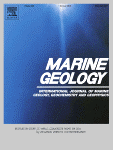Earthquakes and associated tsunamis can be exceptionally dangerous. In the last 12 years, earthquakes and tsunamis offshore Sumatra, Japan and Haiti have killed over 350,000 people. Despite this, many large and growing population centres are located close to plate boundaries worldwide, which is where most large earthquakes occur. It is therefore important to understand how often large, dangerous earthquakes occur.
Records of past earthquakes provide the basis for predicting likely patterns of future earthquakes. However, instrumental or written records of earthquakes typically only extend for a few decades or centuries, and the largest and most dangerous earthquakes may have much longer recurrence intervals. Recent work suggests that submerged landslides and associated longer-runout sediment flows (turbidity currents), which are triggered by earthquakes in marine or lake settings can provide this valuable longer-term earthquake record. New research led by Jasper Moernaut of Austral University, Chile, in collaboration with an international team of scientists, including Mike Clare of the Marine Geoscience Group at Southampton, is providing a better understanding of how earthquakes trigger slope failures. The study, published in the journal Marine Geology, indicates that large magnitude earthquakes trigger very thin (~5 cm), but widespread landslides, rather than much thicker landslides as previously thought. The results of this study will help us better interpret past records of earthquakes and which survey tools should be chosen for exploring similar records offshore. The full paper can be found at: http://www.sciencedirect.com/science/article/pii/S0025322715300499
